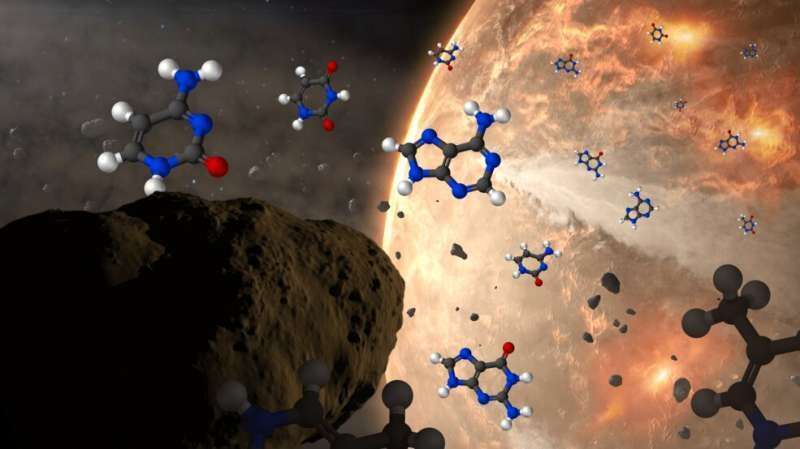Best of Last Week—Blueprint for life in asteroids, converting seawater to drinking water, factors that lead to cancer

It was a good week for the biological sciences as a team of researchers from several institutions in Australia and one in France showed that honeybees, along with humans, are the only known animals that can tell the difference between odd and even numbers. And a team with members from several institutions in the U.S. and Japan looked at the possibility of the blueprint for life originally being generated in asteroids. Also, a team at The University of Texas at Austin discovered a plastic-eating enzyme that could potentially eliminate billions of tons of landfill waste.
In technology news, a team of researchers at MIT designed and built a lightweight, portable device to convert seawater to drinking water using less power than a cellphone charger. They suggest the device, which does not use filters, could be powered by a small solar panel that can be purchased for approximately $50. Also, a team with members from Google, the National University of Singapore, Yale-NUS College and Oregon State University conducted a joint investigation into the risks of malicious users gaining general access to material by inferring sensitive information from training datasets used by learning algorithms. And The Conversation, an independent, not-for-profit, news and information service, reminded users that cellphones are just as susceptible to infection by viruses as computers and outlined ways users can detect and get rid of them. Also, a team at MIT developed a paper-thin loudspeaker that can be used to turn nearly any surface into an audio source.
In other news, Cameron Smith, Christian Yates and Ben Ashby with the University of Bath created a model that showed if the U.K. had conducted a shielding policy during the pandemic, there would have been thousands more deaths—with shielding, those most at risk are protected, while the virus is left to run rampant among the rest of the population. Also, a small international team found a new and surprising duality in theoretical particle physics. And finally, a team led by a group at Yale University was able to quantify the factors that lead to changes in DNA that contribute the most to the growth of most cancerous tumor types.
© 2022 Science X Network